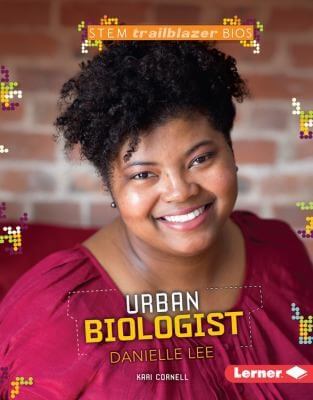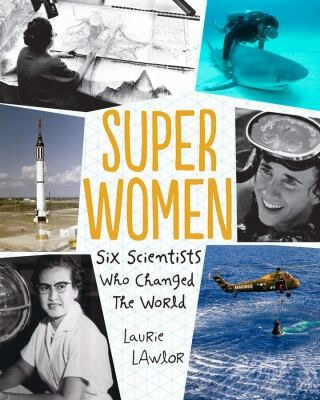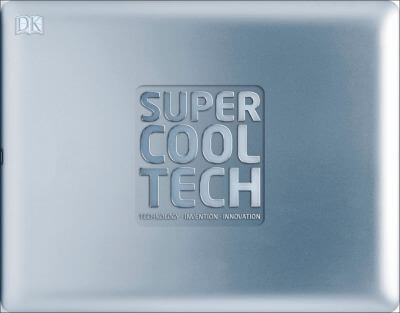When you hear or see the word STEM, what are you thinking? We’re betting that you’re thinking of the acronym that stands for Science, Technology, Engineering and Math. We suppose you could also be thinking of a plant or flower.
STEM has become a household word and we know it means good things for our kids.
Carnegie Library of Pittsburgh offers STEM programs that are engaging, educational, entertaining, and, maybe even messy, which makes it even more appealing to kids. A great deal of the material for the STEM programs come from Super Science kits*. These kits give the librarians ideas, experiments, activities and more. Your kids are the ones who benefit by (inadvertently) learning something in a new and exciting way.
The Super Science kits were developed by a committee of children’s librarians several years ago. The librarians want to make sure that your kids understand the topic, learn new vocabulary, and go away talking about it to their friends and family. The outcome has been stupendous and new kits are coming every year.
One of the first questions we might ask is, what does a scientist do? The Children’s Department at Main recently offered a STEM program and asked that very question. Children were asked to draw a response and then add words if they were able; in some cases an adult helped to write the words. There is no right or wrong answer as we find that scientists do everything!
Here are some of the responses:
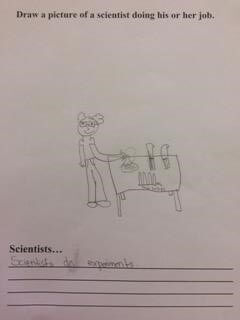
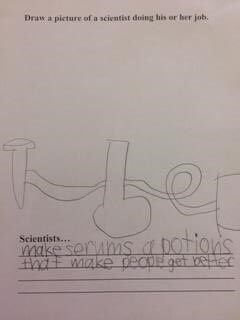
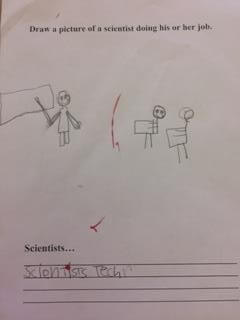
A person may acquire an interest in science when they’re young or old. Take for example Danielle Lee who grew up in South Memphis, Tennessee. Four generations of her family lived in a small apartment and because space was tight, she spent a lot of time outside. She noticed squirrels gathering twigs and birds splashing in puddles. She asked lots of questions and always wanted to learn more. You can learn more about her in the book Urban Biologist Danielle Lee by Kari Cornell.
Super Women: Six Scientists Who Changed the World by Laurie Lawlor is a book you’ll want to look at if you’re interested in those who pursued their passions through fieldwork, observations, laboratories and more. This diverse group of women have awe-inspiring accomplishments and were determined people who wouldn’t take no for an answer. One of the six women is Katherine Coleman Johnson, famous for the movie Hidden Figures, who was mentioned in a previous blog post.
Steven Spangler is another scientist you’ll want to learn more about. He’s written books with experiments where you’ll find yourself asking . . . How did he do that? He’ll spark your imagination with his easy and inexpensive experiments that can be done at home, but he recommends doing them at a friend’s house! Here’s one of the titles to try– Fire Bubbles and Exploding Toothpaste, it’s filled with experiments for the whole family!
Have you ever tried an experiment using chromatography? This is something a STEM program at Carnegie Library of Pittsburgh may do–introduce your children to (new) vocabulary words while they’re having fun.
- Take a coffee filter laying it flat on a covered table
- Put dots from a washable marker around the side of the filter avoiding the bottom
- Gather the filter and place in a clear plastic cup with a ½ inch of water
- Observe the water moving up the filter
- When the water has moved all the way up, remove the filter from the water and set aside to dry
- What happened to the colors?
Chromatography is a technique for separating chemical substances by taking advantage of the differences in the rates at which the substances are absorbed from a liquid. (Liquid is matter in a state in which molecules are able to move around, but are still held in contact.) When you place the coffee filter in the water, the water molecules are attracted up through the paper, which causes the inks to separate into the original colors that were combined to make them.
Would you like more? Check out this website that is an explosion of color! It’s another experiment that you’ll find in a STEM program at Carnegie Library of Pittsburgh.
One more STEM book that’s a must see . . .Super Cool Tech.
Does the cover look familiar?!? Yes, you’re right . . . it’s a laptop! This book is the ultimate guide to understanding the latest inventions and looking ahead to the future of technology.
Get your STEM on . . . visit your library today!
*Super Science programming at the Carnegie Library of Pittsburgh is supported in part by the PPG Foundation.
Kathy is a Senior Librarian in the Children’s Department at Main. While she’s originally from Michigan, she loves Pittsburgh where she enjoys doing Bulgarian folk dancing and sharing the oral tradition of storytelling.
Check out our upcoming STEM programs for kids and their families!
Learn More

